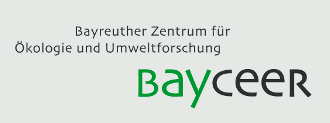Impact of drying and rewetting on carbon cycling in a northern fen
O 4.2 in Klimaforschung
02.04.2009, 16:15-16:30, H8
Peatlands are quantitatively important carbon-storing terrestrial ecosystems where peat develops due to the rate of C input (organic matter as litter) surpassing that of C output (gas efflux and leaching) during biomass decomposition. High water contents are an important factor controlling such equilibrium in these soils since water does not become limiting for plant growth while keeping peat in a highly reduced state and thus lowering peat degradation rate. A predicted effect of current climate change is the potential alteration in the hydrological regime due to extreme rain events and extended dry periods. Thus, greater fluctuations in the water table levels may be expected to influence redox processes and carbon cycling in peatlands.
We investigated respiration and transport processes in peat during manipulation of water table level at ecosystem scale in a small iron-rich fen located in a forested area of North Bavaria (Germany). The experimental design consists of three treatment (dry-rewetting) and three control plots where spatially high resolved peat profiles (2.5, 5, 7.5, 10, 12.5, 15, 17.5, 20, 25, 30, 45 and 55 cm depth) were weekly followed up during 6-7 months. An approach combining gas (for CO2, CH4 and O2 analysis) and pore-water sampling allowed gaining insight into spatio-temporal gradients and linking those to water table fluctuations. Soil moisture, temperature and CO2 concentrations were also investigated at discrete time resolution by installing sensors in the upper peat layer to obtain data series during the investigated period.
A seasonal drying event naturally occurred in the control plots during summer. The drying effect was thus reinforced (greater intensity and duration) in the treatment plots. The main terminal electron accepting process was Fe(III)-reduction as suggested by high reduced iron and nearly undetected hydrogen sulphide concentrations. Water table manipulation affected redox processes in the peat with progressive suppression of Fe(III)-reduction during the drying period and recover of reduced iron concentrations following the rewetting event. Spatial gradients were observed in terms of dissolved gas concentrations along the whole experimental period; oxygen concentration decreased, methane concentration increased and carbon dioxide concentration increased with depth. Drying period effects included cessation of methane production in the whole investigated profile and decrease of carbon dioxide concentration. Water table level rapidly rose during the artificial rewetting event from -80 cm to about -15 cm (data from only one plot). Concomitant response of dissolved gases concentrations occurred with a sudden drop of oxygen in upper peat layers and a steep increase of carbon dioxide in the middle layers. Methane concentrations only recovered in the deepest peat layer showing a lag for more than 100 days after the rewetting. Although the water table level dropped to -80 cm, anoxic conditions were kept in peat at -50 cm suggesting that the water content was high enough to reduce permeability for oxygen which likely was rapidly consumed. Such a difference becomes relevant when considering carbon fluxes as air filled porosity physically controls gas transport across peat profile.
Export as iCal:


